Samaaro + Your CRM: Zero Integration Fee for Annual Sign-Ups Until 30 June, 2025
- 00Days
- 00Hrs
- 00Min
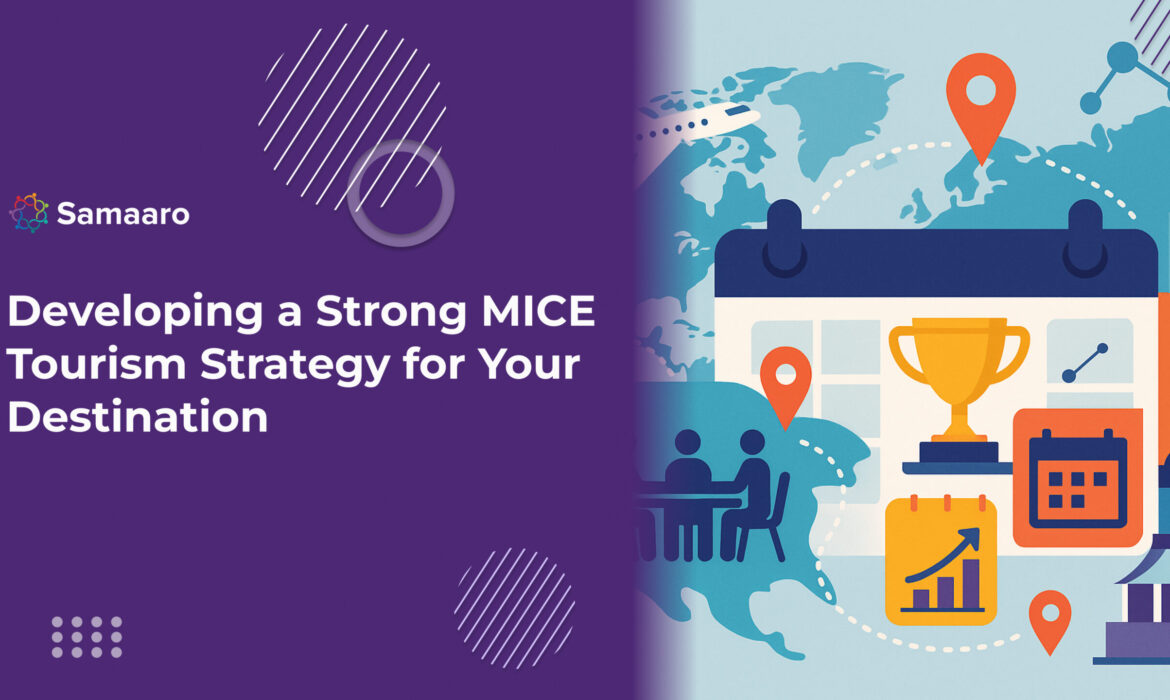
MICE tourism, which stands for meetings, incentives, conferences, and exhibitions, is quickly becoming one of the most influential and lucrative global sectors of the travel and hospitality sectors. For destinations with a focus on promoting business tourism, not only do the economies enjoy economic stability, but they typically have a higher quality of infrastructure and also generate greater international awareness or exposure.
In fact, research shows that MICE travellers can spend more than leisure tourists will often stay in higher value accommodation, use multiple services and visit during non-peak peak periods.
Cities such as Singapore and Dubai have shown how a concerted effort that focuses on MICE tourism can transform a city into a global events city. Through long term investment in infrastructure (built environment), memorable branding and the establishment of public-private partnerships, they attracted thousands of delegates every year bringing much needed revenue, employment and brand.
For any destination, large or small, developing a MICE tourism strategy can unlock similar potential. This blog provides a comprehensive guide to help you understand the MICE market, assess infrastructure, forge key partnerships, create targeted marketing campaigns, and deliver high-impact events that encourage repeat visits. Whether your city is just beginning to explore this space or aiming to scale existing efforts, the following steps will help you build a sustainable and high-performing MICE tourism plan.
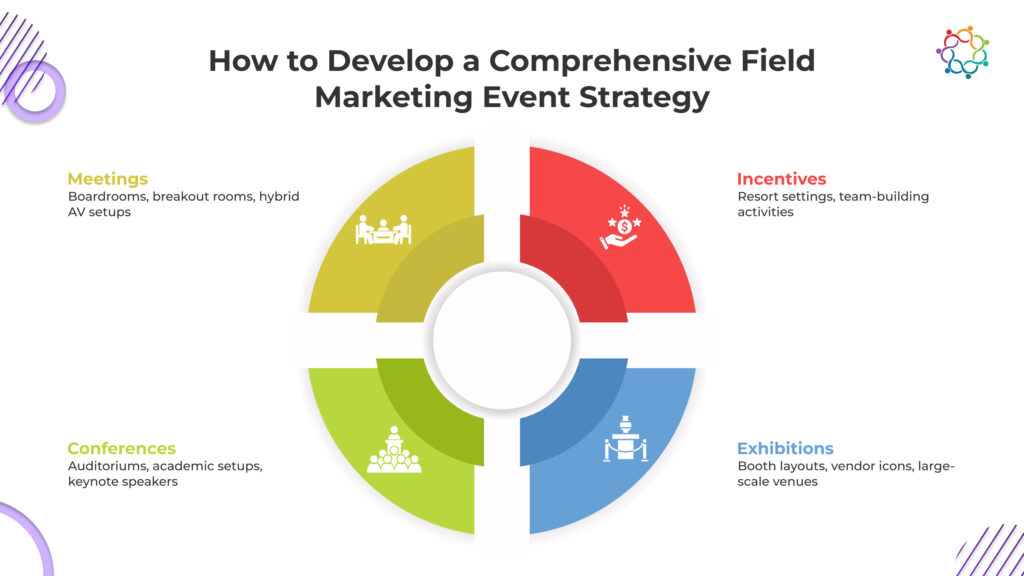
A successful MICE tourism strategy begins with understanding who your ideal audience is and what kind of events your destination can realistically support. The MICE sector includes a wide range of event formats, corporate board meetings, trade exhibitions, incentive trips, and international congresses, and not all are equally suited to every destination.
Research information from reliable sources such as the International Congress and Convention Association (ICCA) or the Global Association of the Exhibition Industry (UFI). This will help you identify high value sectors like health care, finance, or technology to help guide your strategy related to market demand. For example, if your city is known for health care or has great universities, you would want to see if there is a possibility to focus on bidding for medical conferences.
Research what other destinations, especially similarly sized destinations are doing to attract MICE events, including competition and collaborations. What types of venues do they have, what types of incentive packages do they offer, do they have government support, and do they have an international ranking? You should outline what your competitive advantages are – affordability, culture, location, etc.
MICE planners frequently rely on infrastructure, visa facilitation, safety and sustainability, and technology. Attendees are weighing a mix of functional and experiential needs. Attendees want to meet with others for quality networking, have smooth logistics, enjoy some cultural experiences, and satisfy their curiosity. Destinations strive to meet and exceed expectations for each.
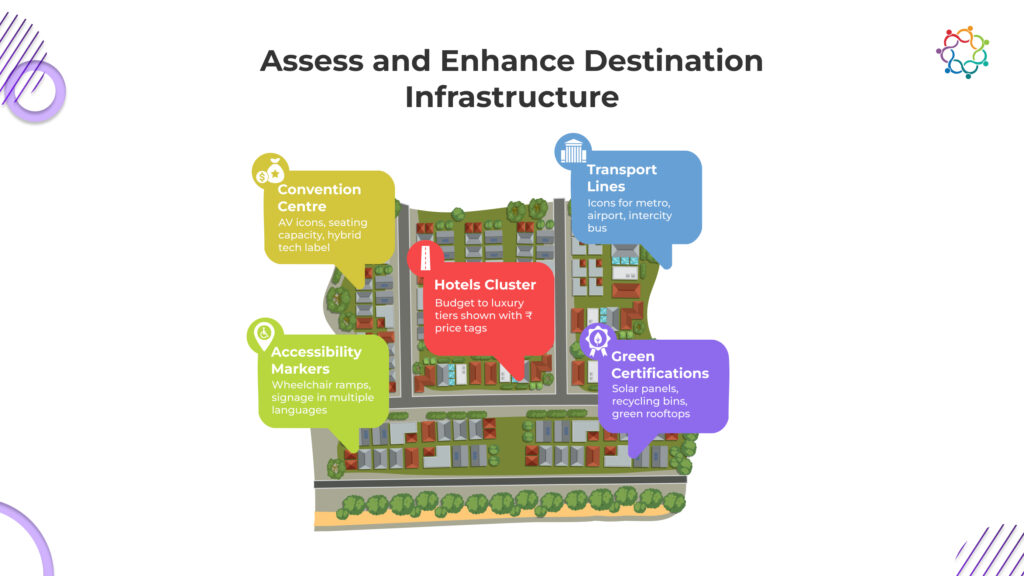
Infrastructure is a cornerstone of any MICE tourism strategy. A destination must be equipped to handle business events efficiently and at scale, offering both functionality and comfort to planners and participants.
Carry out a full inventory of current resources, including convention centres, business hotels and transport systems, and identify the number of meeting rooms, capacity, availability of high-speed internet, language services and accessibility. Don’t forget to assess the infrastructure for hybrid or virtual events, an increasingly present menu of options.
Wherever there are gaps, increase your investment to upgrade to contemporary industry standards, including modular meeting rooms, audio-visual systems, live-streaming capabilities and on-site technical support. In the age of smart tourism, destinations that adopt smart infrastructure are capable of hosting a wider breadth of events.
Make sure visitors arrive seamlessly through airport and rail connections and public transport. Build or add inventory to include every level of accommodation from business friendly budget stays to a luxury five-star experience, again with an eye to flexibility for different delegate profiles.
Sustainable tourism is no longer a fad, and has quickly become an expectation. Work with venues and vendors to incorporate sustainable mechanisms such as digital check-in systems, reusable decorations, locally sourced menus and environmental waste disposal. These go a long way in maximizing chances to be shortlisted for international events.
Example
Dubai upgraded its Dubai World Trade Centre with advanced AV capabilities and obtained sustainability certifications, allowing it to host international exhibitions with tens of thousands of attendees. The investment paid off, with the city becoming a preferred host for global industry expos.
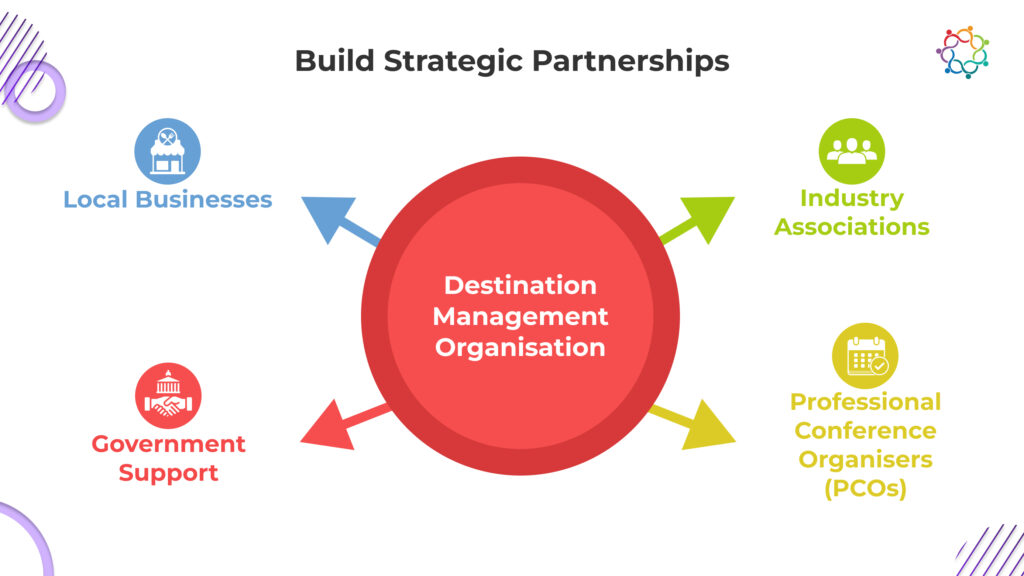
Strong partnerships are at the core of every successful MICE tourism plan. Partnerships create a richer resource base with one shared message for event developers.
Work with local hotels, restaurants, transportation companies, museums, attractions, and even universities to create a bundled MICE offering. A bundle can combine discounted accommodation rates with vibrant local experiences, significantly enhancing the value for potential customers.
Work with some of the global associations like the Meetings Professionals International (MPI), Professional Convention Management Association (PCMA), and ICCA. By engaging with their specific events or supplying their meetings and conferences with a platform, it raises the profile of your destination and adds credibility to your offer.
Lobby your public sector to contribute in terms of permitting access, providing funds for local events, offering subsidies for travel, or helping with regional promotions. When local governments provide public support to MICE initiatives in your destination, it demonstrates to international meeting planners that MICE in your destination is serious business.
Professional Conference Organisers provide experience, networks, and logistics to be able to offer fully-fledged services. They are able to bear a lot of the workload with the partners working with the PCO, apply the local stakeholder, but also ensure international standards are maintained.
Example
Barcelona collaborated with local universities to host academic conferences in life sciences. This positioned the city as a global education and research hub, attracting recurring scientific events and increasing delegate footfall by 35 percent over three years.
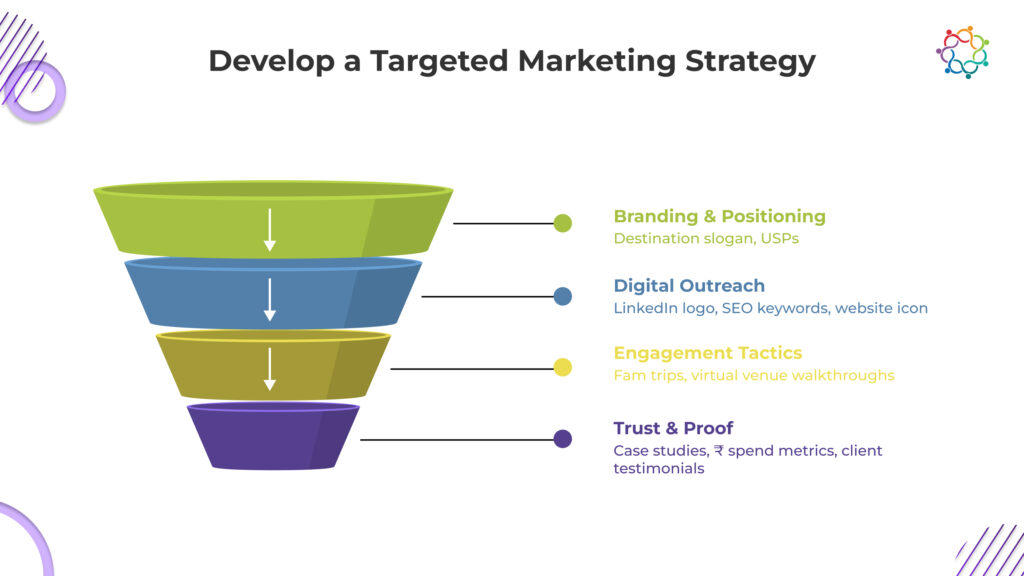
Even a MICE-ready destination must have an effective marketing strategy to inform potential event organisers about their offerings.
Build a clear identity that showcases your distinct advantages. For example, you could brand your city as “Ahmedabad: The Heritage Hub for Conferences” or “Kochi: The Sustainable Destination for International Events”. Your MICE brand needs to resonate with international planners and reflect your city’s core strengths.
Use search engine optimised content targeting search terms like “promoting MICE tourism” or “marketing strategies for MICE destinations”. Use stand alone pages, create blogs and maintain fun content via LinkedIn to encourage engagement with planners. Use testimonials, videos, and case studies from past events.
If you can bring top tier planners to your destination, that is a big advantage. Familiarisation trips provide the opportunity for planners to evaluate venues, meet service providers, and evaluate the whole experience–eventually making it easy for them to book.
Demonstrate metrics like numbers of delegates, organiser ROI and revenue to the city. There are success stories for tech summits, trade expositions, or incentive programmes that have showcased value.
Example
Las Vegas created LinkedIn campaigns showcasing its convention infrastructure and even hosted virtual fam trips. Within a year, they saw a 15 percent rise in international event enquiries and secured multiple multi-day bookings.
The long-term value proposition in implementing your strategy is dependent upon attracting events as well as executing them successfully.
Travel, venue access, AV set-up, and registration should all go according to plan, as well as any emergency intervention; therefore, you will need to appoint a MICE liaison officer to mediate between the organisers and local authorities.
Maximise for business event experiences: Make it worse with local authenticity: Local culture (i.e. cultural shows, local food, local handicrafts/exhibitions), day trips to local heritage attractions or sites. If attendees are geographically immersed, it can amplify attendee satisfaction and event word-of-mouth.
Analyse feedback: Post event surveys will give you data about what was good and what can improve. After the event, you should reach out to organisers so they are encouraged to come back and increase relationship longevity.
Analysing/surveys: total spend, overnight stays, attendee satisfaction surveys, and post event media coverage; we will be able to provide some insight, for our own evaluative strategy use, strategy benchmarking and demonstrate the value we provide and develop for public sector stakeholders.
Example
A leading IT conference held in Goa ended with a gala featuring Goan cuisine and live Konkani music. The experience became a viral talking point, and 95 percent of attendees rated it “excellent” on post-event surveys.
An effective MICE tourism strategy can significantly shape the economic trajectory of a destination. It generates year-round demand, strengthens infrastructure through increased connectivity, drives regional development, and opens the door to global exposure. Whether your city is aiming to host international conferences or local industry expos, success lies in a structured approach, grounded in market research, infrastructure readiness, strong partnerships, focused marketing, and flawless execution.
Begin by targeting regional associations or niche industries where your destination already has a competitive edge. Build credibility through successful smaller-scale events before expanding into national and international territory. For a deeper dive into how to measure and optimize your strategy, explore our comprehensive guide to MICE event ROI.
With the right foundation in place, your destination can emerge as a leading MICE hub, creating jobs, boosting the economy, and putting your region on the global map.

Built for modern marketing teams, Samaaro’s AI-powered event-tech platform helps you run events more efficiently, reduce manual work, engage attendees, capture qualified leads and gain real-time visibility into your events’ performance.
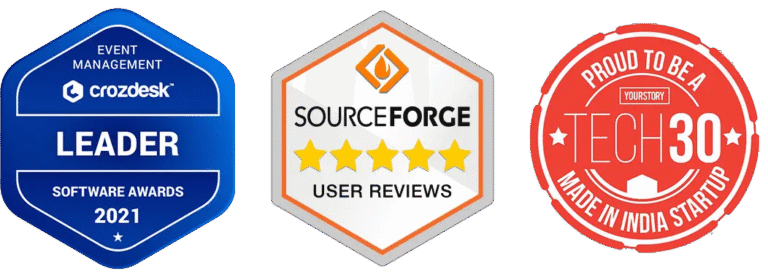
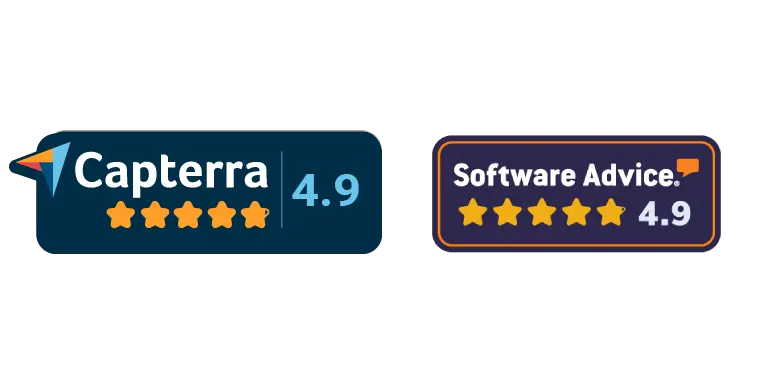
© 2025 — Samaaro. All Rights Reserved.